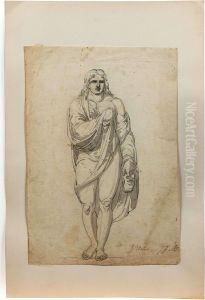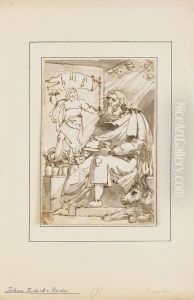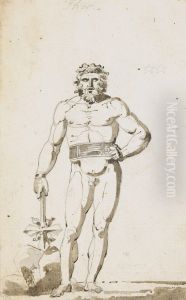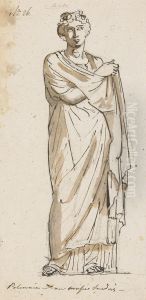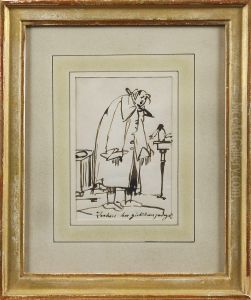John Fredrik Von Breda Paintings
John Fredrik von Breda was a Swedish painter who is best known for his portraits and historical paintings. Born on August 22, 1759, in Hamburg, Germany, von Breda hailed from a family of artists. His father, Johan Fredrik von Breda, was also a painter, and it was under his guidance that John Fredrik began his initial training in the arts.
Von Breda moved to Stockholm in 1778 to continue his studies at the Royal Swedish Academy of Arts. There, he honed his skills and emerged as a talented portraitist. His ability to capture the likeness and character of his sitters earned him considerable acclaim. In 1780, his talent was recognized with an award from the academy.
Seeking to further his education and experience, von Breda traveled to Paris in 1784. He studied under the French painter Alexander Roslin, who was well-known for his elegant and refined portraits. Von Breda's style was influenced by Roslin's approach to portraiture, which was characterized by a sophisticated use of light and color.
After spending time in Paris, von Breda ventured to Rome in 1787. He remained in Italy for over a decade, where he continued to develop his craft and was influenced by the works of the old masters. During his Italian sojourn, von Breda became acquainted with other artists and intellectuals of the era, which further enriched his artistic perspective.
Von Breda returned to Sweden in 1796 and was appointed as a professor at the Royal Swedish Academy of Arts. He also served as the academy's director from 1812 until his death. His contributions to Swedish art were significant, and he played a pivotal role in nurturing the next generation of Swedish artists.
Throughout his career, von Breda painted numerous portraits of the Swedish royal family, nobility, and prominent figures of the time. His works are characterized by their realism, attention to detail, and sensitive portrayal of the subjects' personalities.
John Fredrik von Breda passed away on May 29, 1818, in Stockholm. Today, his works can be found in several museum collections, including the Nationalmuseum in Stockholm, and they serve as an important record of Swedish cultural history during the late 18th and early 19th centuries.
